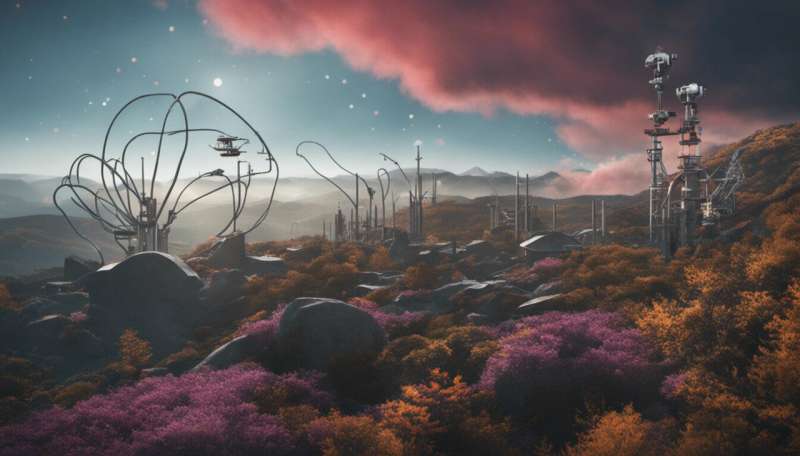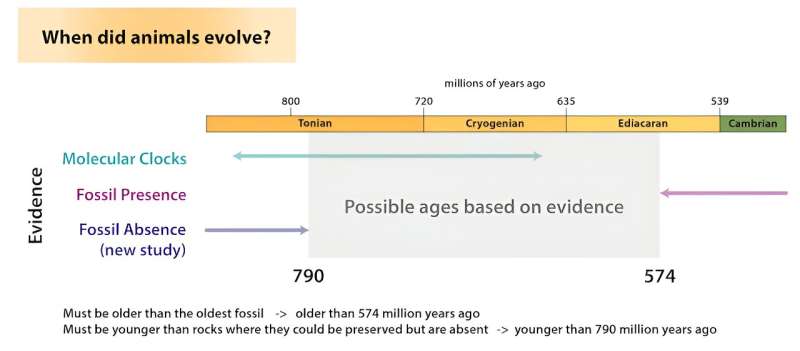Scientists can't agree on when the first animals evolved—research hopes to end the debate

There are estimated to be nearly living today, making up the majority of Earth's documented biodiversity and inhabiting almost all of its environments. However, for most of Earth's history animals were completely absent.
The date of the first animals marks a shift in the history of life on Earth. Of course, as animals ourselves, it's also the story of our origins. Without animals, our planet would have been a very different world.
The question of exactly when animals first evolved has puzzled scientists for centuries. was stumped. He predicted a long history of evolution from simple single celled organisms to complex animals. However, the oldest animal fossils Darwin knew of, from around 500 million years ago, were large enough to be visible to the naked eye and often had shells and skeletons.
hopes to help settle the debate through a new approach to the question.
Why animal evolution is controversial
Scientists used to think animal fossils appeared suddenly in a time period around 500 million years ago called the , so named because the fossil record seems to show a sudden boom in complex life at this time. We know the first animals evolved in the oceans, and with their abilities to move and burrow, they fundamentally altered the .
However, since Darwin, paleontologists have discovered thousands more fossils, some of them more ancient than the Cambrian Explosion. Impressions of strange-looking organisms, called the , were discovered in the 1950s in rocks and have been dated to around 574–539 million years ago (the ). Some of the Ediacara Biota fossils represent the .
Yet these recent advances have taken the animal fossil record back only so far. Reports of older and more simple animal-like fossils have been published. For example, from the Mackenzie Mountains, Canada are around 800 million years old. But these older fossils . They could be algae or perhaps not even fossils at all.
Also, the presence of fossils doesn't necessarily confirm the date for the evolutionary origin of animals. Only a fraction of life has ever been fossilized meaning the fossil record is .
With no definitive first animal fossils, paleontologists have turned to molecular biology, using genetics to trace ancestry. This technique, called the , works by sampling the genetics of modern animals and comparing their DNA. The differences in DNA between species shows how much evolution has happened.
Although molecular clocks can only provide estimates for the timing of animal origins, , long before the Ediacaran extent of the animal fossil record.

This gives us two estimates for animal origins, more than 200 million years apart. On the one hand fossils extend to 574 million years ago, while on the other, molecular clocks suggest animals could be as old as 800 million years.
Turning back the clock
In our , my colleagues and I suggest a new way to estimate the timing of animal origins. Instead of documenting the oldest animal fossils, we first considered which kind of rocks could preserve those animals.
An animal's body type determines what kind of rock can fossilize it. Many animals have shells and skeletons that can be preserved in most types of —such as sandstone—that start as sediments in rivers. However, the . Animals evolved these structures at a later time.
Studying deposits such as the fossil bed in Canada, which is around 508 million years old, showed my team that fossils of animals lacking shells or skeletons, such as worms, are often . Clays have and can of animal soft tissues.

We tested rocks from geological eras older than the Ediaracan period (635 million years ago) to work out which ones had the clay-rich composition necessary to fossilize the first animals. Rare rocks around have the necessary clay-rich properties.
Although these rocks could preserve the first animals, none of them do. This suggests that animal fossils are absent at this point in time, not because they couldn't be preserved but perhaps because they weren't there—that animals hadn't evolved yet.
Paleontologists now need to search more geological sites across the planet to confirm the youngest clay-rich rocks that could have preserved the first animals, but where animal fossils are absent. This will help us to home in on the true timing of animal origins.
Provided by The Conversation
This article is republished from under a Creative Commons license. Read the .![]()





















